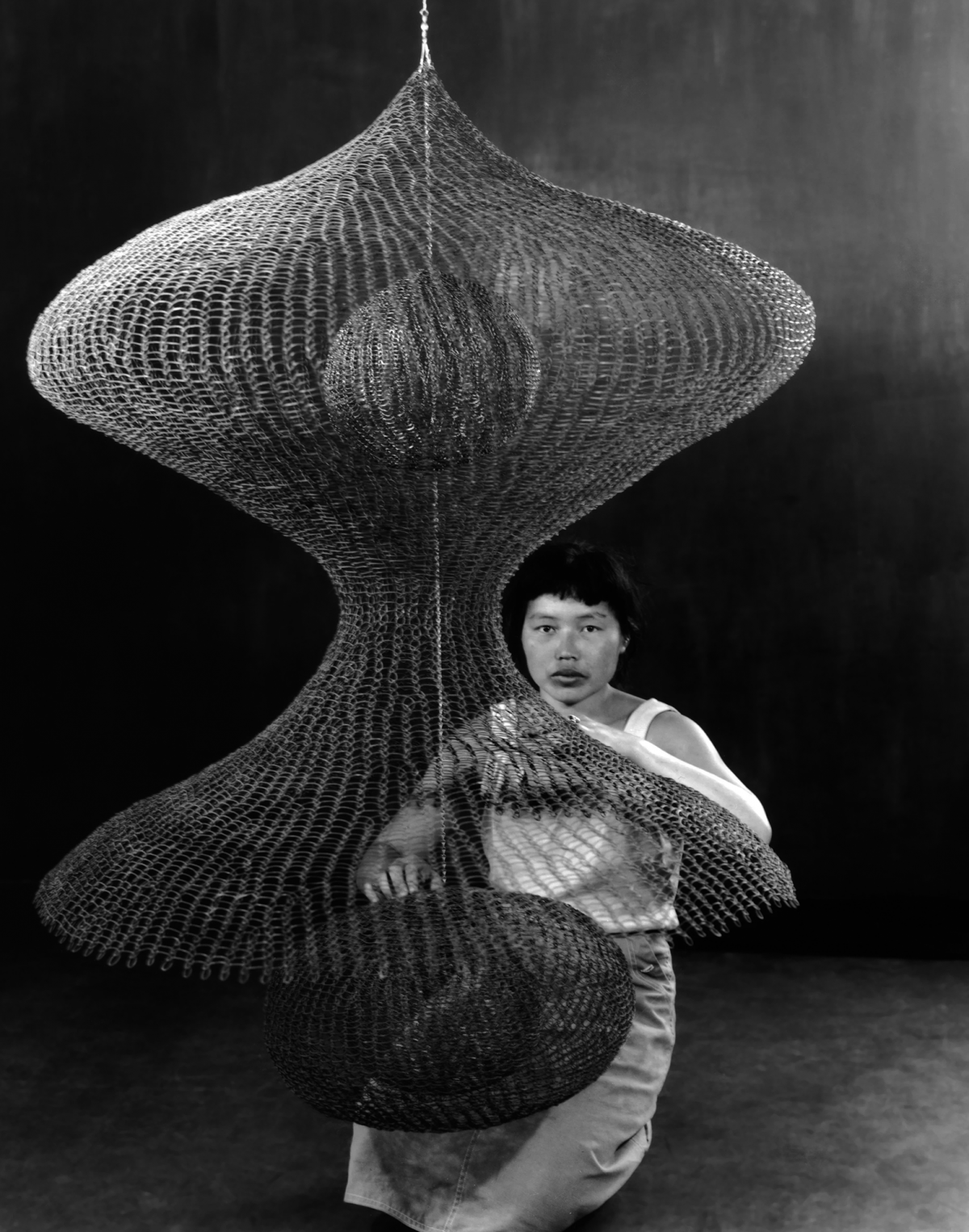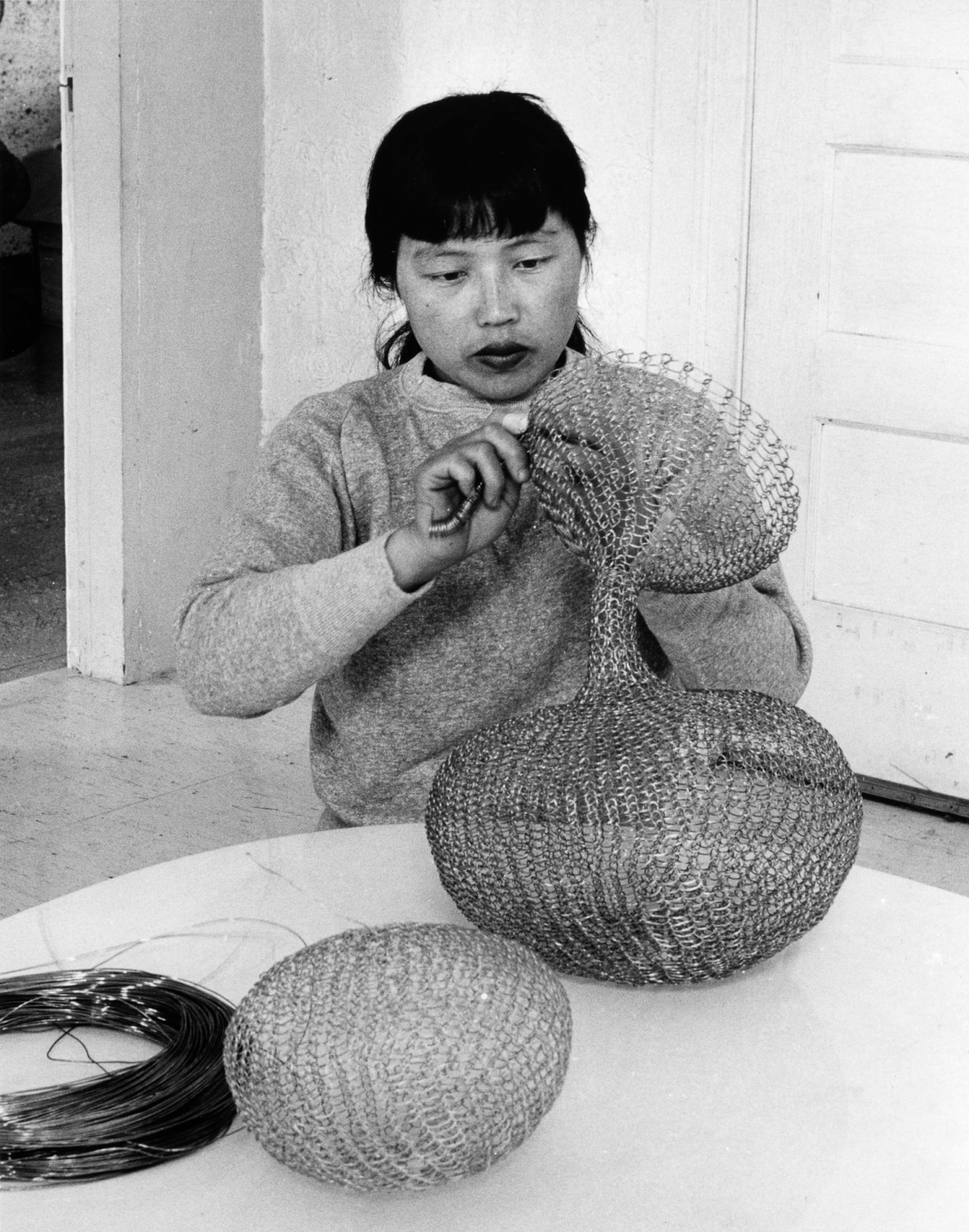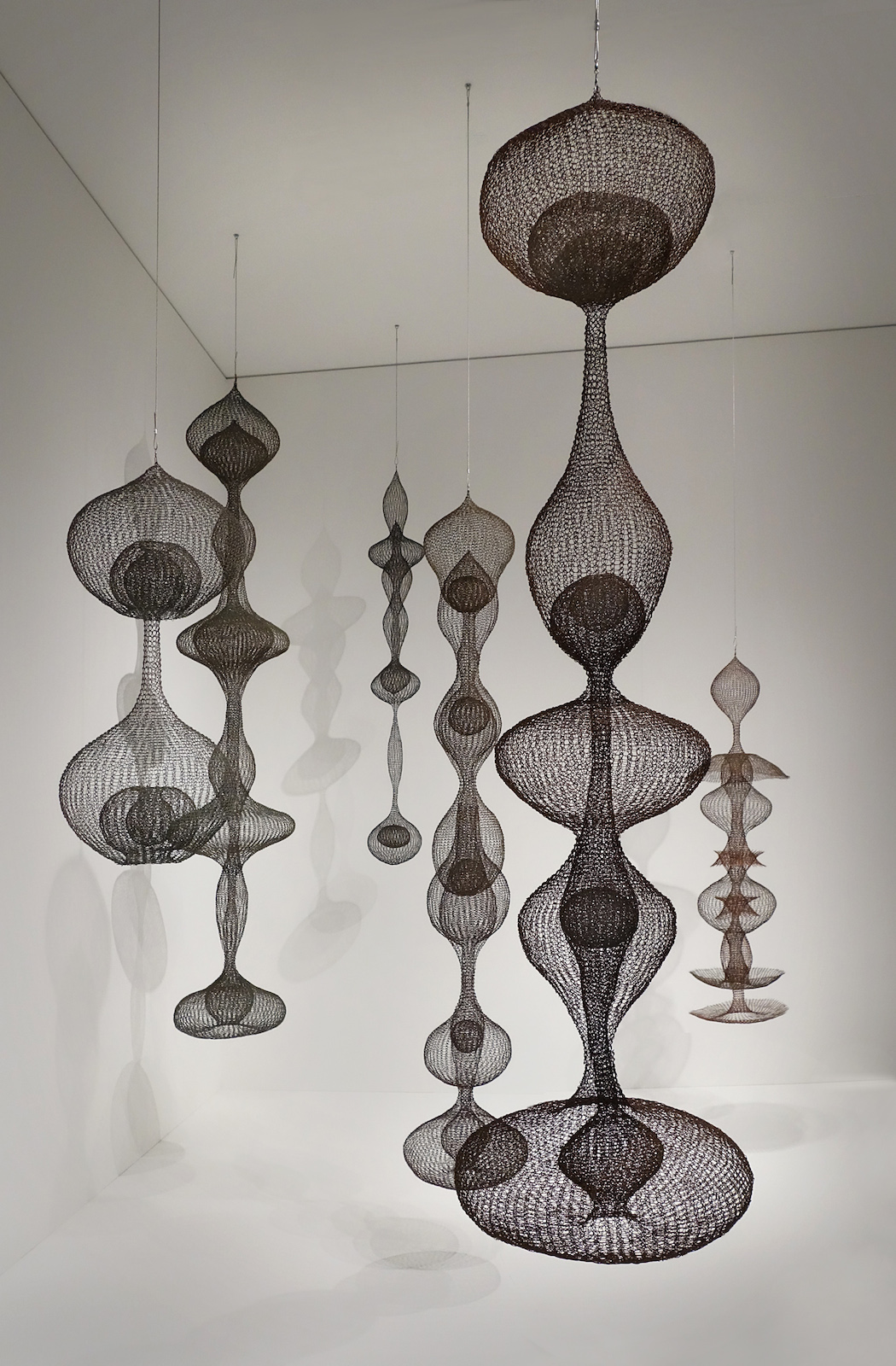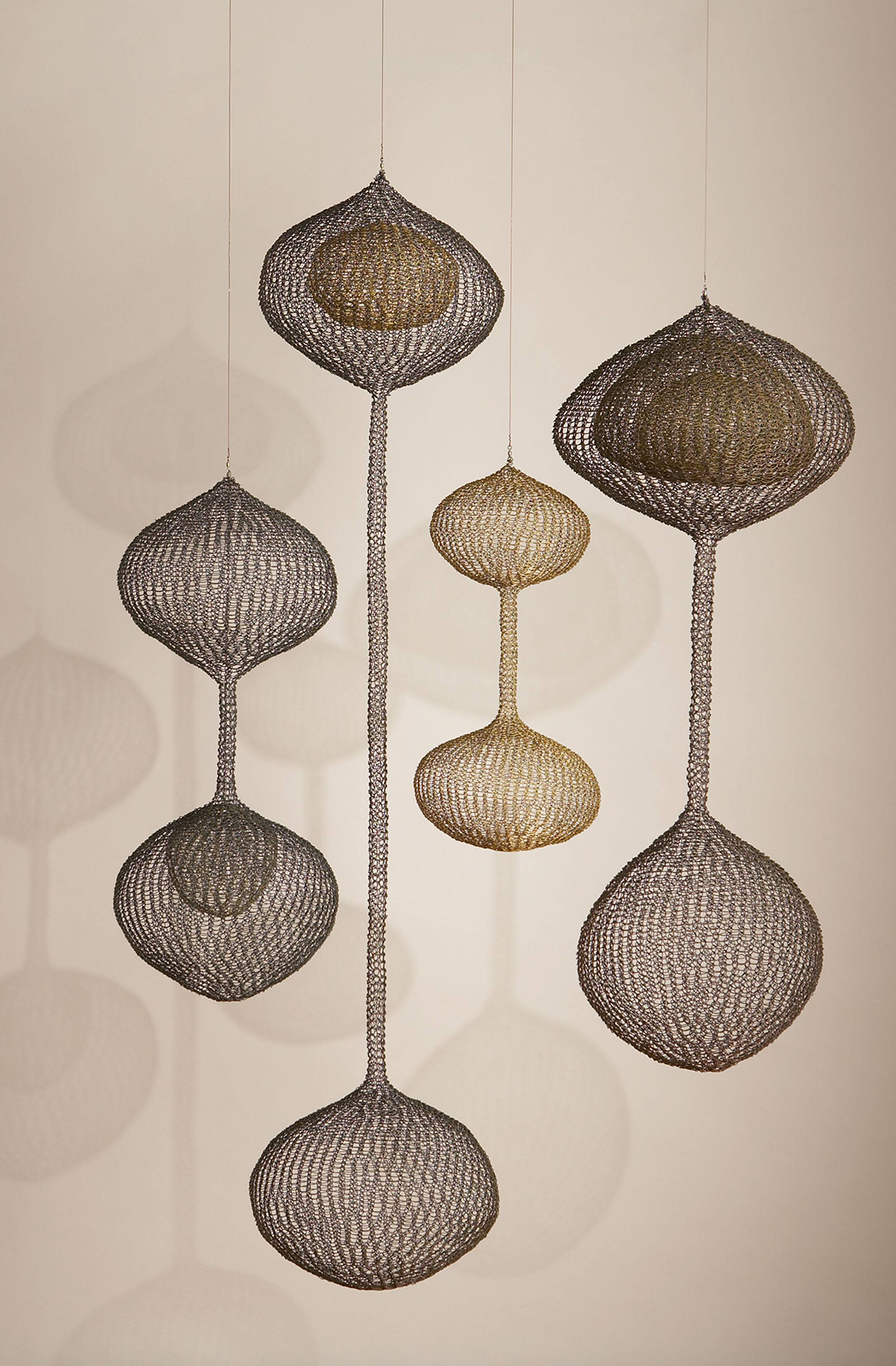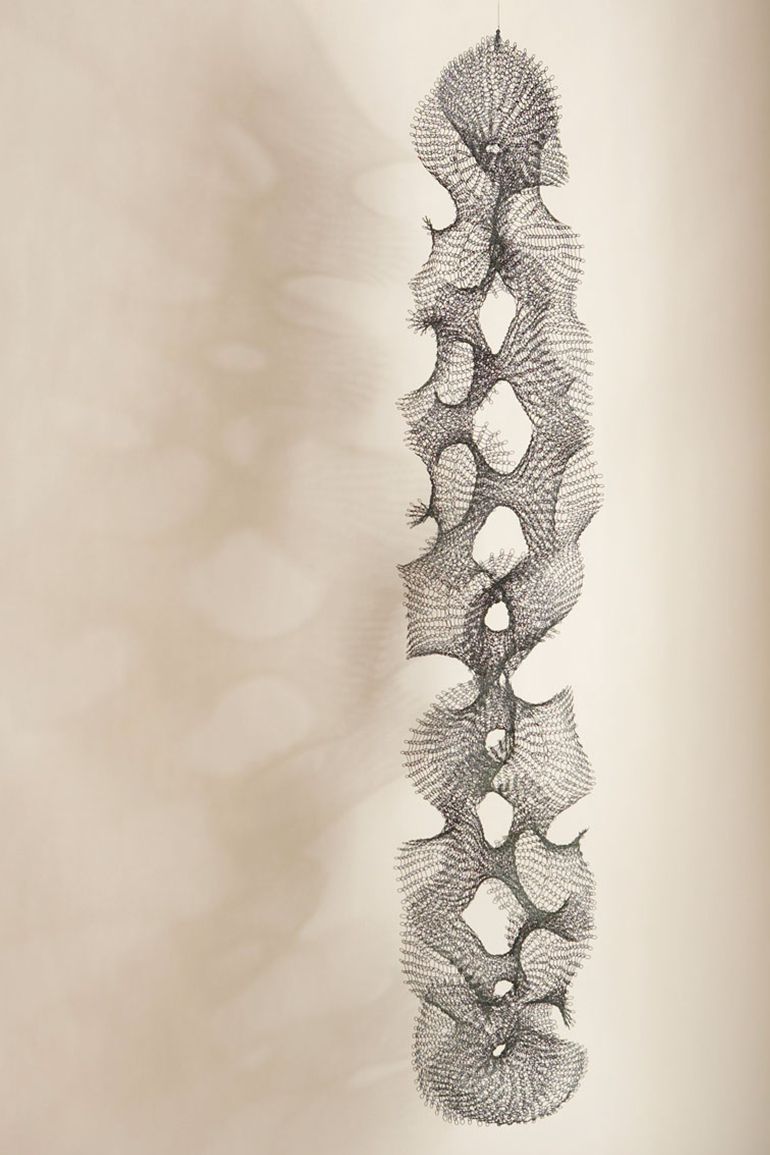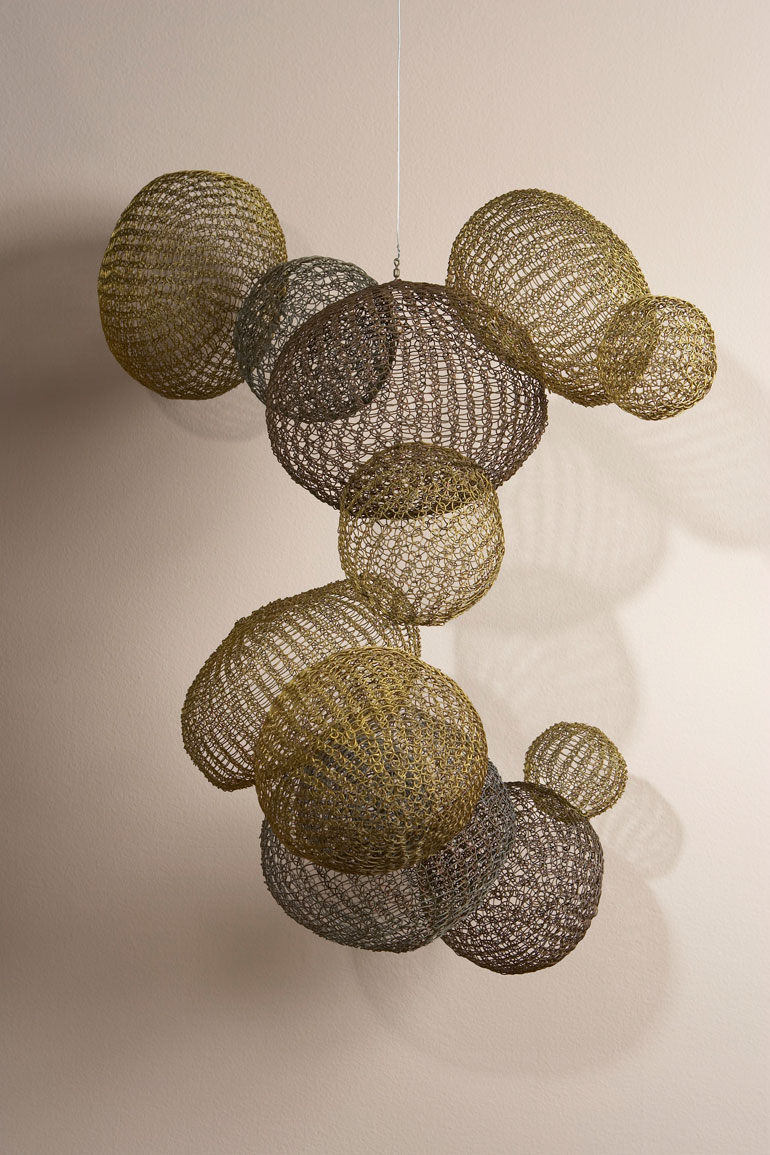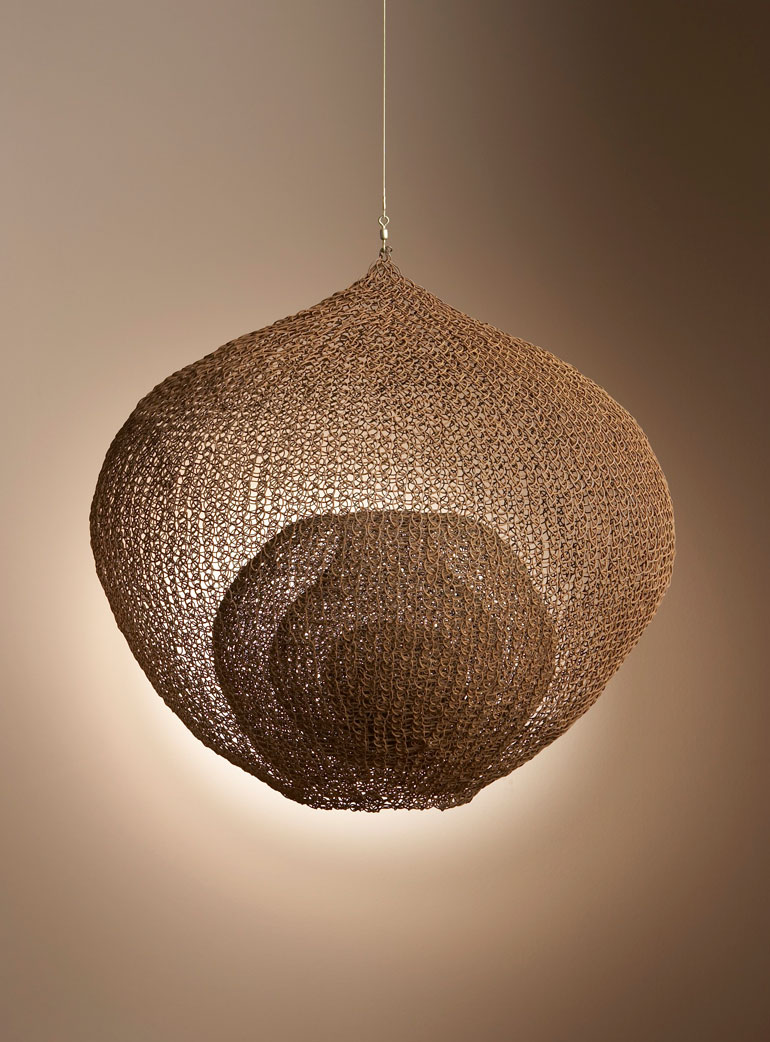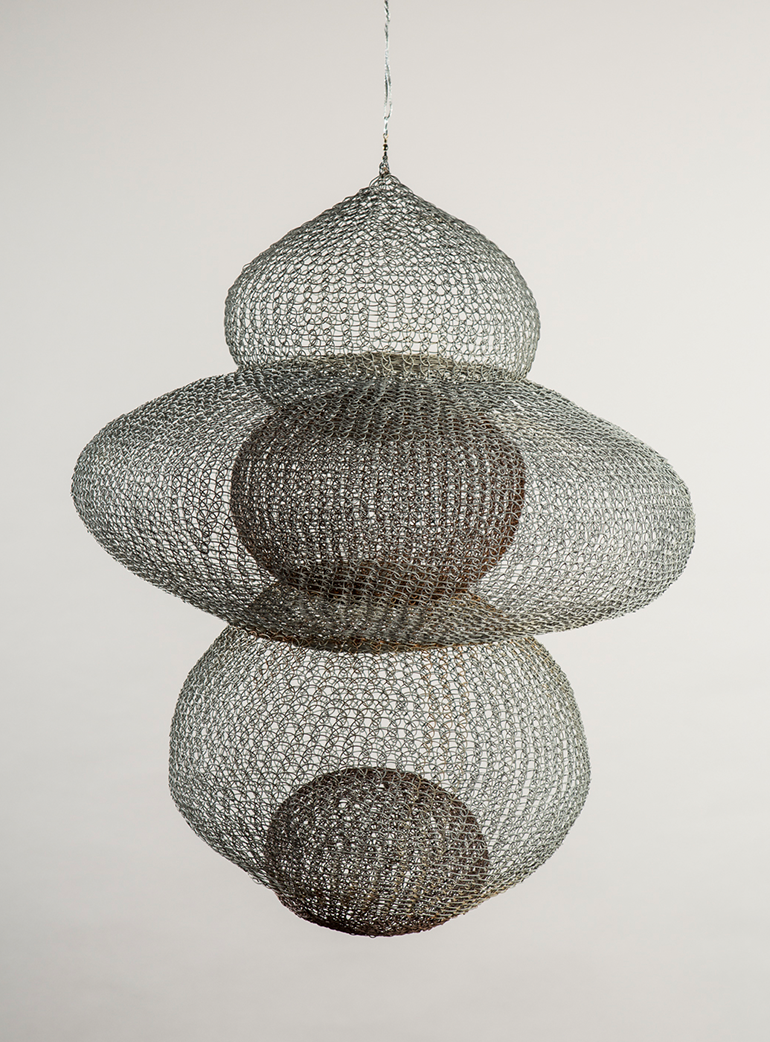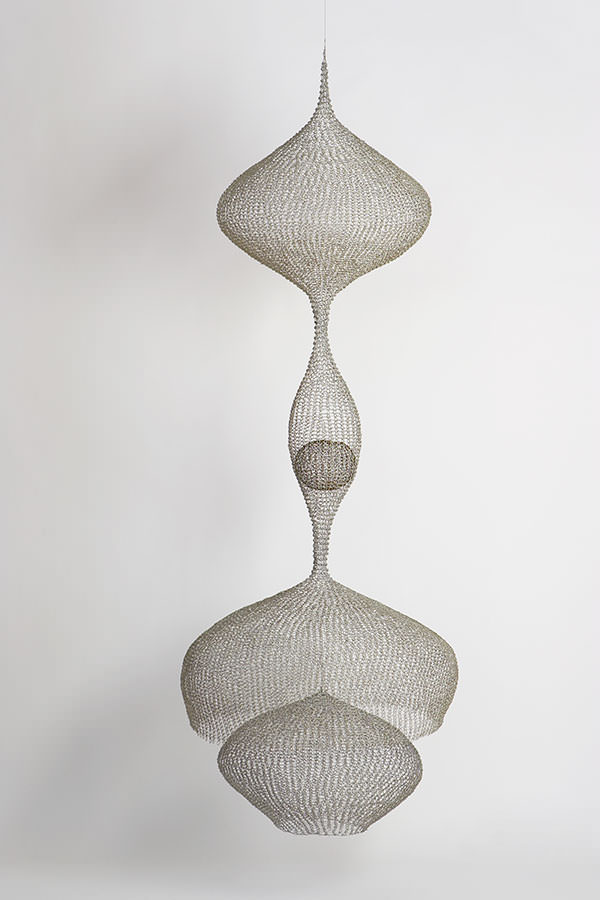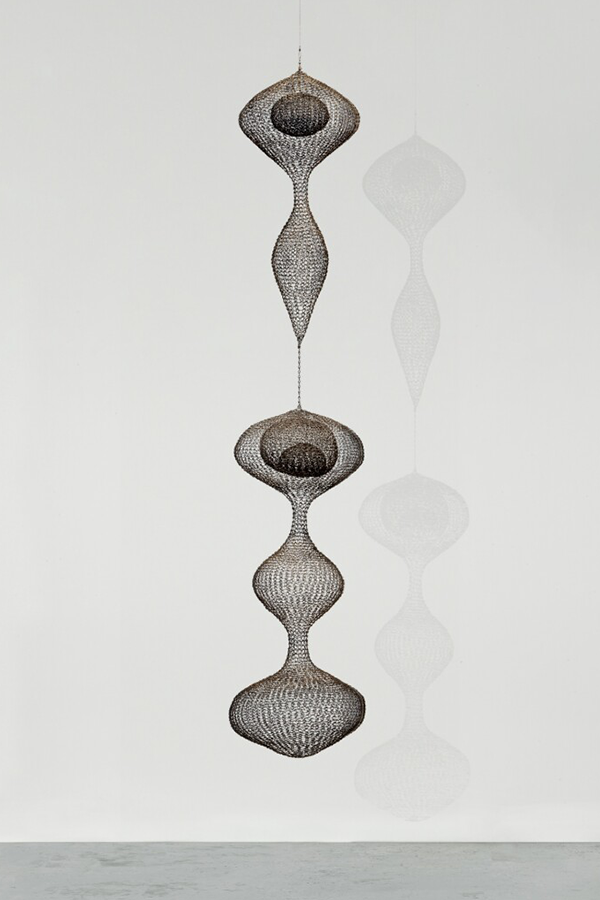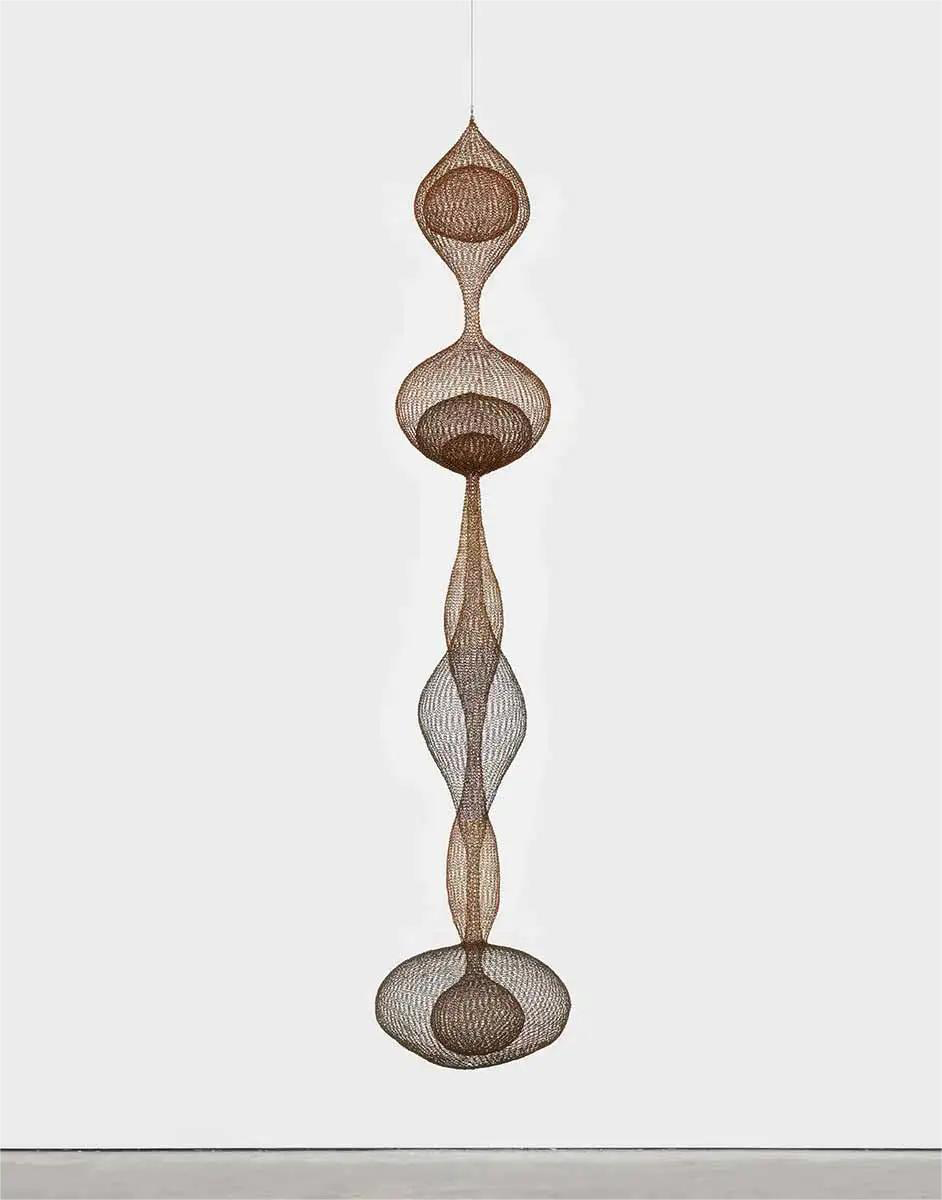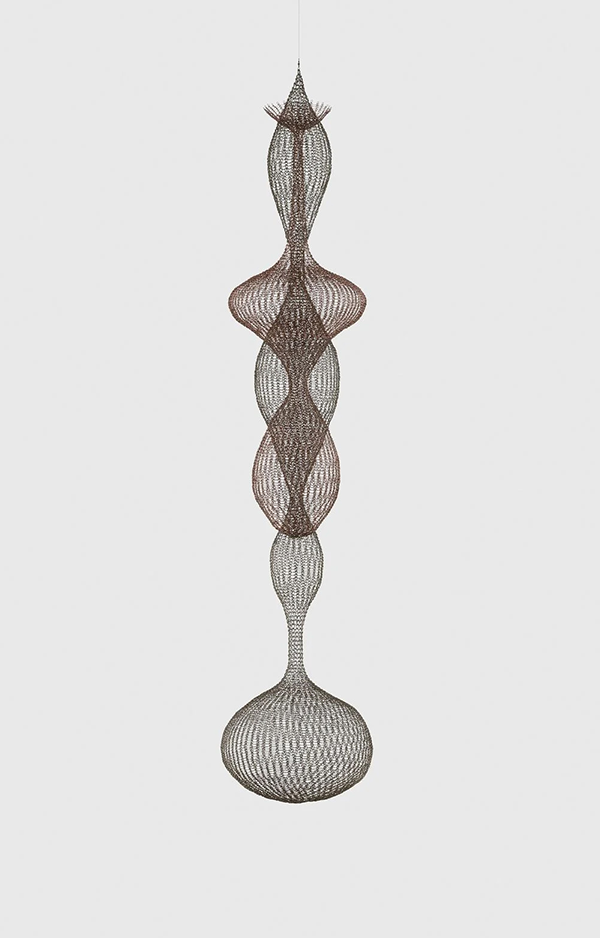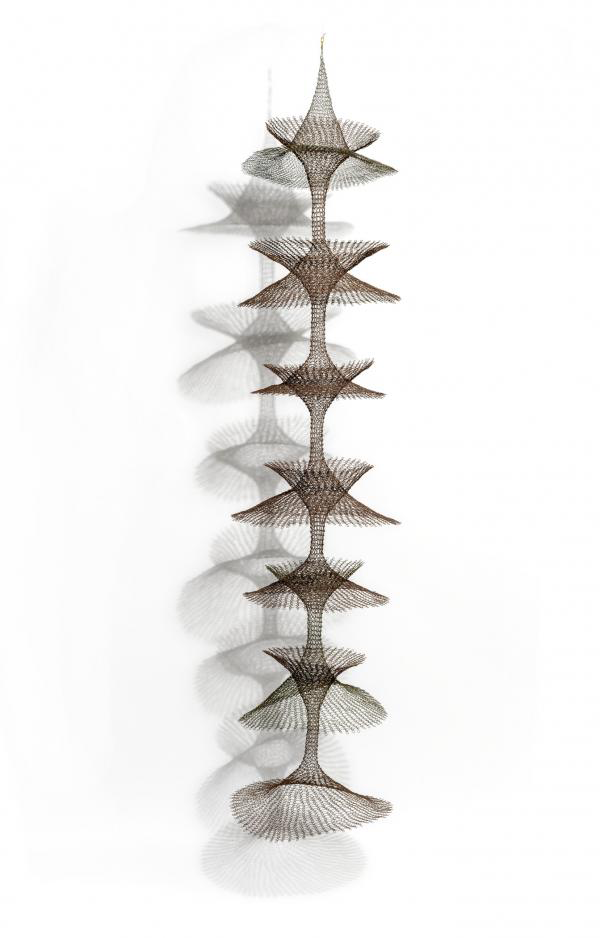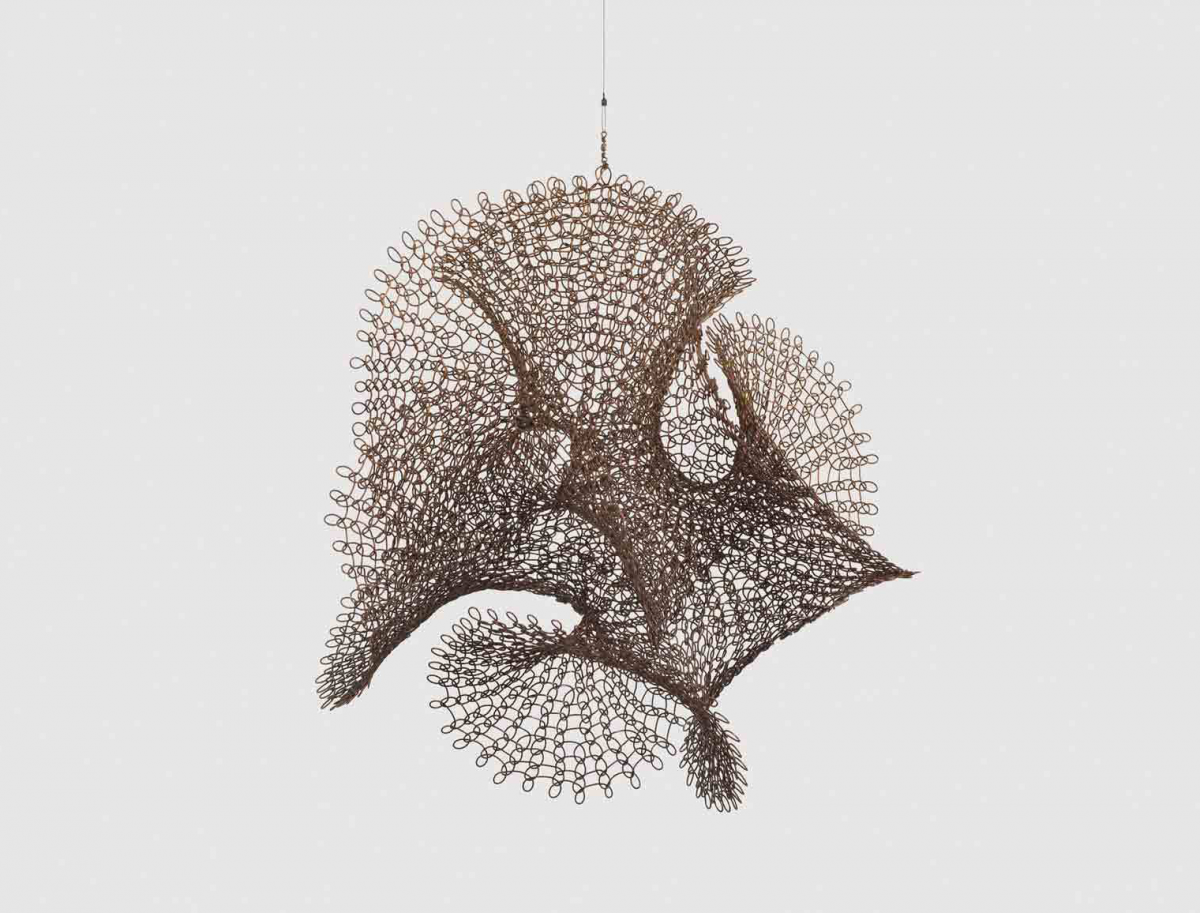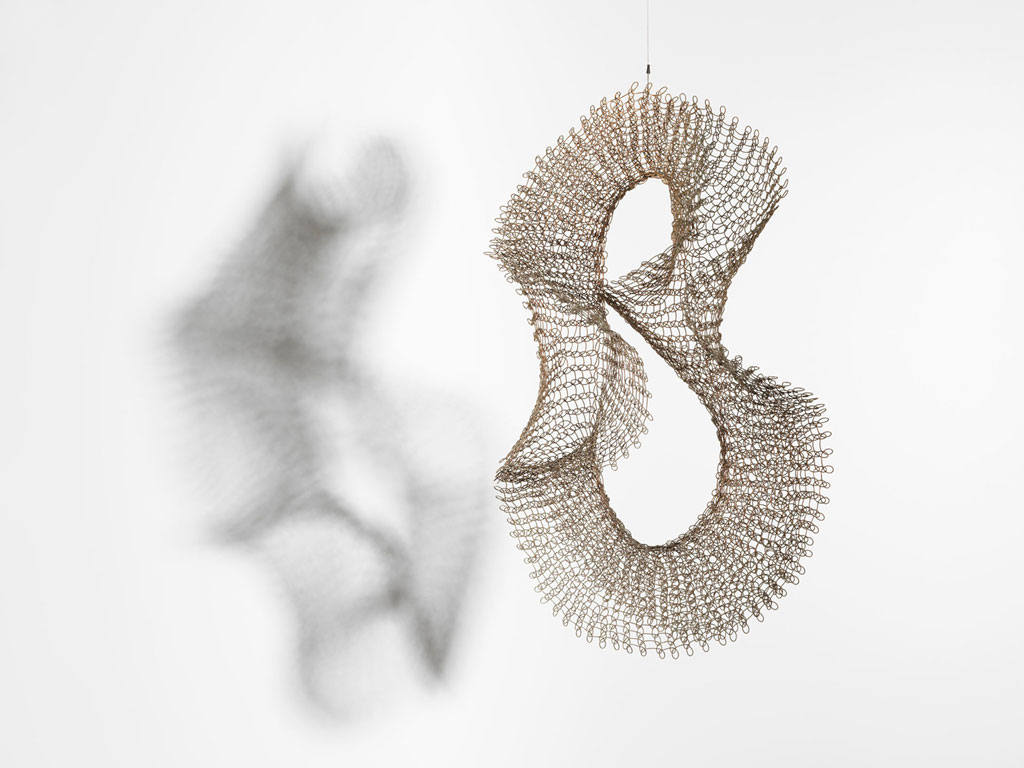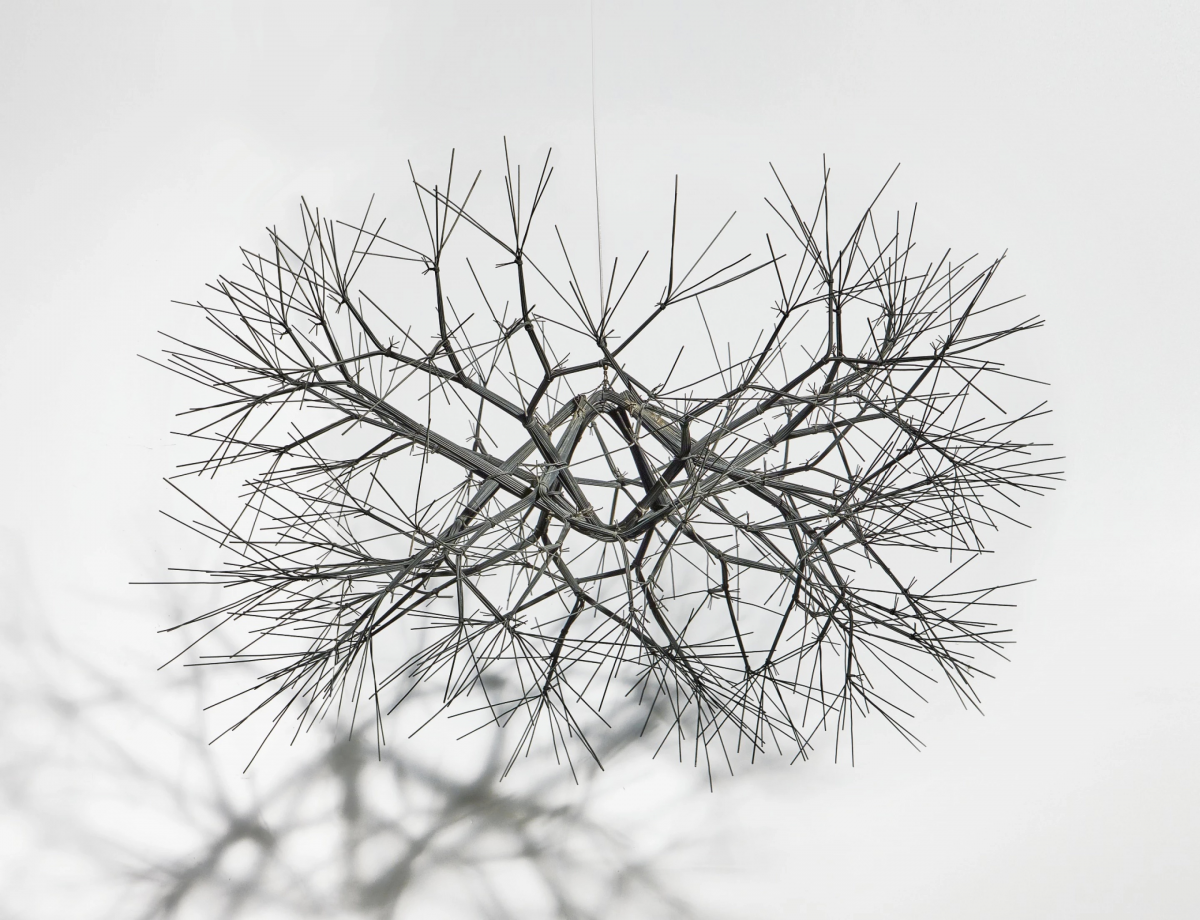
Ruth Asawa
I am fascinated by the possibilities of transforming cold metal into shapes that emulate living organic forms.
Artist Ruth Asawa died on August 6, 2013 at the age of 87 at her home in San Francisco. She studied painting at a Japanese-American internment camp during World War II and later became known for weaving intricate, fluid, dreamlike abstract sculptures. Before she became a sculptor, Asawa wanted to be a painter. She grew up on a farm and had a lifelong love of observing plants which she often painted. Black Mountain College taught her to see the fluid relationships between color, form, and space. Later on she returned to figurative painting — to the plants and flowers whose natural forms fascinated and inspired her.
Ruth Asawa often describes these tied-wired sculptures using terms such as“tree”and“branching form.”She began with a center stem of 200 to 1,000 wires, which she then divided into branches using nature as her model. As she continued working in this form, she moved into more abstract forms using geometric centers of four, five, six, and seven points. If you look at these sculptures, you can see how the number of points in the center defines the forms that the branches take. As with her other work, these tied wire forms gave her the freedom to explore how“the relation between outside and inside was interdependent, integral.”
Meandering lines and patterns, explorative variations of the same form or subject, and the most economical way to convey an image characterize her work. The act of drawing, not the drawing itself, mattered to her. Drawing was a daily exercise to hone her perception and concentration so that she was always ready to see. The dangling vertical forms, bulbous and sinewy by turns, contain interior orbs like bodily organs visible through a wire-mesh epidermis. Moving almost imperceptibly, their dark netted surfaces create shimmering, kinetic optics that alternate across translucency, obscurity, and filigree shadow. Metaphorical associations to biological and imagined lifeforms gather and accumulate.
- Art: Ruth Asawa

